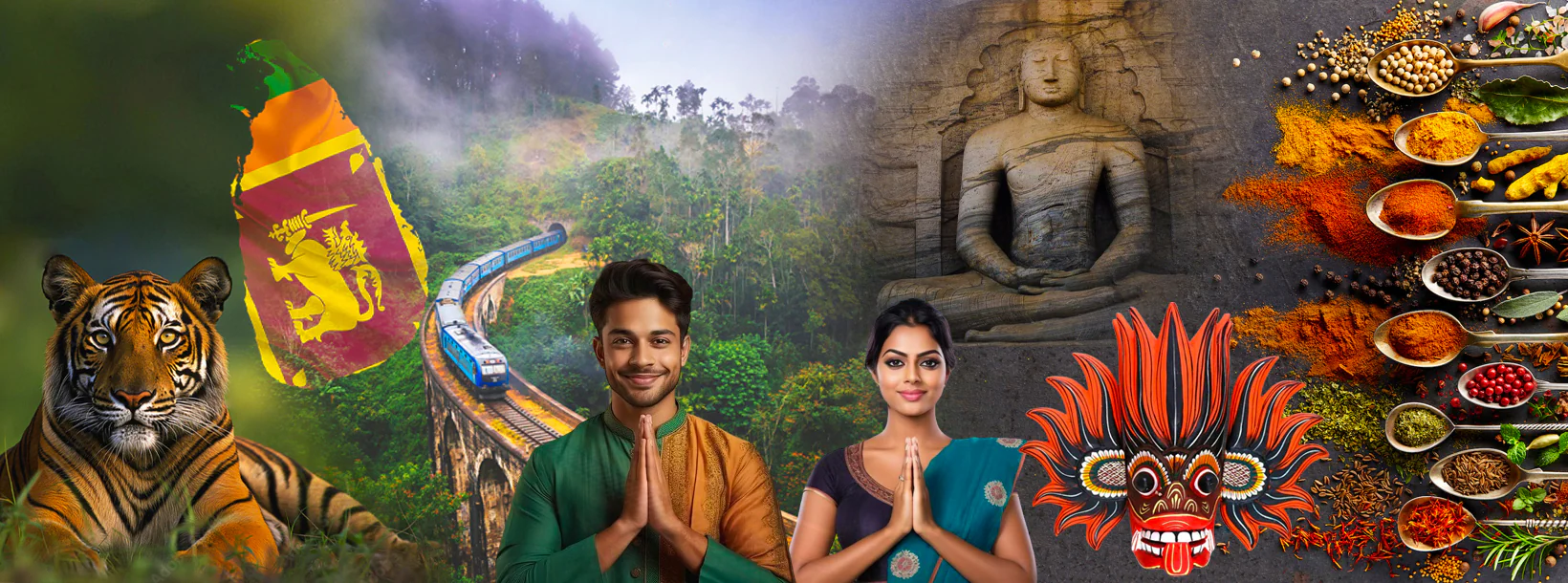
Sri Lanka
Sri Lanka, an island nation in South Asia, is renowned for its rich cultural heritage, diverse landscapes, and wildlife. Attractions include ancient temples, pristine beaches, lush tea plantations, and vibrant festivals. The country's unique blend of cultures, warm hospitality, and delicious cuisine make it a captivating destination for travelers.
Traditional Agriculture
Sri Lanka has a rich agricultural history dating back more than 2500 years. For centuries, paddy cultivation in the island nation was not just an economic activity but a way of life that shaped the society, culture, religion and economy. The sustainable and organic agricultural practices of both the near past and the ancient people of Sri Lanka, exemplify the interconnectedness of nature and human life. Furthermore, it demonstrates our ability to survive and thrive harmoniously alongside nature. Vegetables, fruits and oilseed crops are also cultivated in the country.
Paddy Cultivation
Present-day rice production is one of the main crops and staple foods in Sri Lanka. Rice is the staple food of 21 million Sri Lankans and is the livelihood of more than 2 million farmers. More than 30 percent of the total labour force is directly or indirectly involved in the rice sector. It cultivates mostly North Central and East provinces of Sri Lanka. The seasons are called Maha season and Yala season. Maha Season starts by September and ends by March. Yala season starts by May and ends by August. Yala season is the main and most important paddy season.
Cocoa
Cocoa (Theobroma cacao) production contributes to the national economy of Sri Lanka. It is grown in fairly dense shade and generally cultivated under coconut and rubber. Although cocoa production remains a source of revenue, it is no longer a main economic sector. The great part of cocoa cultivation occurs in the Matale, Kandy, Badulla, Kurunegala, Kegalle and Monaragala districts.
Coconut
Coconut production contributes to the national economy of Sri Lanka. The scientific name of the coconut is Cocos nucifera. Sri Lanka there are three varieties, tall variety, dwarf variety and King coconut variety.
Spices
Sri Lanka's most famous export, cinnamon is the island's premier spice export. Industry insiders classify the spice into two forms, Ceylon cinnamon (Cinnamomum Zeylanicum), and Cassia Cinnamon. Ceylon cinnamon is the costlier variety and is considered to be a much more upmarket product by those in the West.
Also cultivating the Pepper, Curry Leaves, Turmeric, Clove, Cardamom, Lemongrass and Citronella, Vanila, Ginger and etc.
Tea
Sri Lanka (formerly called Ceylon) has a climate and varied elevation that allows for the production of both Camellia sinensis var. assamica and Camellia sinensis var. sinensis, with the assamica varietal holding the majority of production. Tea production is one of the main sources of foreign exchange for Sri Lanka.
The humidity, cool temperatures, and rainfall of the country's central highlands provide a climate that favors the production of high-quality tea. On the other hand, tea produced in low-elevation areas such as Matara, Galle and Ratanapura districts with high rainfall and warm temperature has high level of astringent properties.
Fruits and vegetables
Around eighty different varieties of fruits and vegetables are grown in Sri Lanka's varied agro-climatic areas. The cool and salubrious climatic conditions in the hill country are ideal for temperate crops such as carrot, leek, cabbage, cauliflower, salad leaves, beet, bean, bell pepper, and salad cucumber. The well-demarcated low country and dry wet areas are suitable for a variety of tropical fruits and vegetables ranging from green chilli, red onion, pumpkin, bitter gourd, melon, sweet and sour banana types, queen pineapple, papaya, mango, lemon and gherkins.




